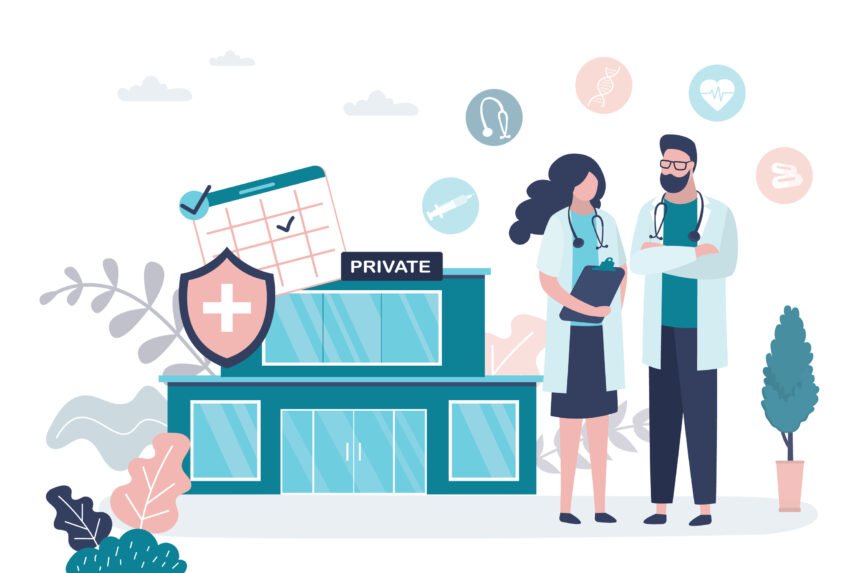Technologies have revolutionized many industries, including healthcare. The adoption of health tech has brought many benefits, from automatizing repetitive tasks and better diagnosis to preventing the spread of viruses and keeping people safe.
3 most common examples of how digital solutions changed healthcare
Health tech encompasses solutions developed to improve patient’s treatment, medical records analysis or any other area of medical practice. With the ongoing pandemic, we have realized the importance of healthcare software development once again. So, let’s take a closer look at how digital medical tools shape the healthcare system.
1. Digitalisation and increased accessibility
Digital solutions ensure that a patient with an Internet connection can access remote care, including control check-ups, review lab results, schedule appointments or new prescriptions. Electronic health records allow storing all the information about a patient in one location, eliminating error-prone paper-based medical records. And a doctor can seamlessly access a patient’s data from anywhere.
Moreover, the imposed social distancing restrictions have accelerated the adoption of alternative ways of collaboration, including phone and video calls, cloud-sharing platforms, etc. Healthcare professionals can use digital communication tools to examine patients, discuss treatment plans, and share their knowledge with colleagues.
2. Enhanced data security
Innovative security solutions can help to safeguard patients’ data and comply with all the necessary regulations. Here are the most common approaches towards increased security:
- Multi-factor authentication – using several validation methods like passwords and biometrics authentication adds a level of security and guarantees that only authorized people will get access to the data.
- Data backup – to eliminate the possibility of data loss in case of cyber-attacks, medical institutions can back up data daily. Distributing data between several locations can increase the security of the system. When storage is under attack, the part of the data in other locations is safe.
- Data encryption – all medical information can be encrypted according to the security standards. In case storage is compromised, the encrypted data is still inaccessible for malicious actors.
- Vulnerability testing – regular tests of medical software allow identifying weak spots or bugs that can be addressed to prevent data breaches.
- Improved diagnostics
Advanced technologies help doctors to analyse massive data sets and artificial intelligence and machine learning-powered algorithms indicate patterns that may reveal potential diseases. Moreover, when diagnostic technologies define a patient at risk, wearables allow tracking patient health conditions and start preventative treatment once the vital signs worsen.
3. Key technologies innovating medical practice
From chatbots that collect basic information about a patient to robotic surgeries, health tech applied to various medical cases. Let’s go through the most common technologies that help to improve patient treatment.
Robotics
There are many applications of robots in healthcare. Robots monitor a patient’s health condition, notify medical personnel when some help is needed, and assist during surgeries by making small incisions. Embedded with a navigation system, robotic assistants can help to disinfect and prepare the ward for the surgery, deliver medications and test results.
Robots are also very beneficial during a patient’s rehabilitation period. It can monitor if the movement is the same every time, track the patient’s performance and help doctors see the progress. Another example is the exoskeleton – the wearable robot that helps people with spinal cord injury move, including standing and walking.
Virtual and augmented reality
Intravenous injections are the fastest way to deliver the drug to a patient, but nurses might miss the vein from the first try. Augmented reality (AR) can be used to see better where veins are located. Moreover, doctors can apply AR during surgeries to gain so-called X-ray vision and better find the organs, tumors, etc.
Virtual reality (VR), on the other hand, can be used to create a training environment where students can gain practical knowledge. More experienced specialists can also use VR simulation to understand better how the surgery could go.
3-D printing
3-D printing is a well-known technology in many sectors. When it comes to healthcare, 3-D printing can be used for regenerative medicine. This technology can be applied to the creation of prosthetics. And bioprinting can help to supply fully functionals organs. 3D bio-printed implants can be specifically tailored for the patient needs and recreate small and complex structures.
Conclusions
Advanced technologies can help healthcare professionals to deliver better patients care. We have already witnessed multiple examples of how health tech is revamping the industry. There are even more thrilling developments to expect. So do not miss a chance to stay on top of the trends and leverage all the benefits of technology in healthcare.

